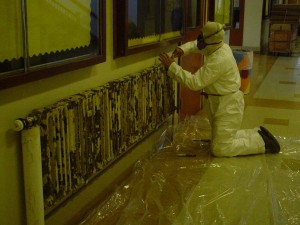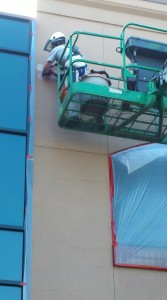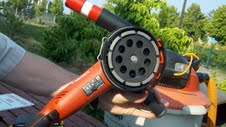Entries tagged with “air sampling”.
Did you find what you wanted?
Thu 6 Sep 2012
Posted by admin under Admin Controls, Air Monitoring, Engineering Controls, Exposure, Federal OSHA, GHS, Hazard Communication, industrial hygienist, Management, MSDS, OSHA, PEL (Perm Exp Limit), Safety Policies, Training
Comments Off on When do you resample?
After performing an industrial hygiene survey (air monitoring), have you considered when you should resample? Here are some considerations that might help you in determining when.
- Are there specific rules that state when you must resample? For example, the construction lead standard (1926.62) states that you must resample yearly (or actually, that you can only use relevant results for one year).
- Has the process changedsince the last time you sampled? This one is hard to determine. Lot of things can change air monitoring results, here’s a “starter list” of things that can change a process.
- Different employee?
- Time of year? Summer versus winter? (closed up/open and humidity)
- Is a new tool in place?
- Has the ventilation changed?
- Have new controls been put in place? (administrative, systems operations)
- Has the product changed? Check the safety data sheet (aka MSDS).
- Are more (or less) employees exposed to this hazard? This might change some assumptions you have made about your risk.?
If you have air sampling performed, make sure you have a written report of your findings. Laboratory results without an explanation of how they sampled, where, # of employees, process description, PPE used, safety data sheets, etc….is worthless. You may remember is well enough, but OSHA will have a hard time believing that it is a similar exposure the next time you do the “exact same thing”.
Having this report and sharing it with the employees will fulfill (part of) the hazard communication standard requirement to employees.

Tags: air monitoring, air sampling, exposure monitoring, GHS, industrial hygiene, MSDS, OEL, OELs, OSHA, report, safety
Thu 12 Jul 2012
Living in the NW, stucco is not as prevalent, compared to other areas of the US, as a building material. I finally got the opportunity to perform air monitoring for silica during stucco crack repair. From what the contractor explained, only the top layer of stucco (1/8 inch) is removed. He claimed the top layer is mostly an acrylic. The employee was wearing a 1/2 face tight fitting respirator with P100 (HEPA) cartridges. In addition, engineering controls were used. Â  The contractor had a grinder with a shroud and vacuum to remove the dust. This would not be considered a worse-case sampling scenario. From conversations with the plasterer-employees onsite, grinding is usually “VERY dusty”.
The contractor had a grinder with a shroud and vacuum to remove the dust. This would not be considered a worse-case sampling scenario. From conversations with the plasterer-employees onsite, grinding is usually “VERY dusty”.
Sampling performed only for the duration of the grinding (3 hours). Conclusion?: We did not find any detectable levels of silica or respirable dust.
Please don’t use this sampling as the only information on how to proceed for your project. However, here are my observations:
- If acrylic material is the top 1/4 inch, you may not impact silica (or have any airborne).
- Airborne dust was very well controlled by grinder with shroud & vacuum (see pic below).
- Assume you will have dust until you can observe (or prove) otherwise. Wear a respirator.
- Perception is huge. If there is a big dust cloud coming from your grinder—even if there’s no silica… the observers don’t know the difference, and, well,…you know the story.
 


